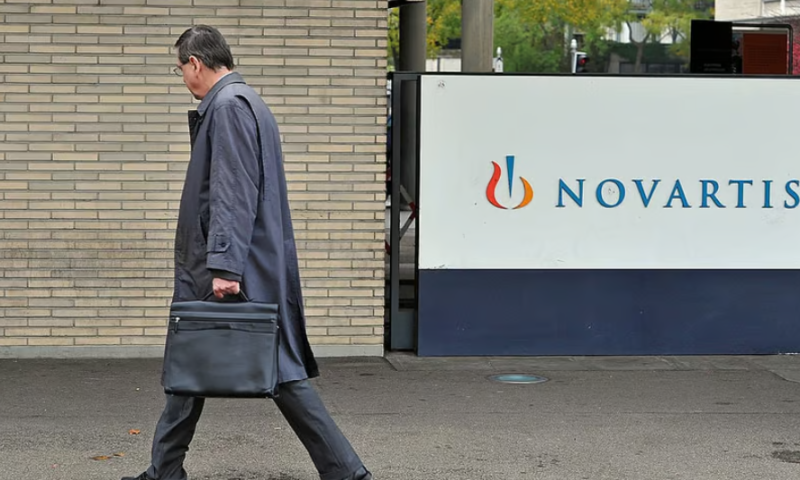Novartis has undertaken an old-fashioned decimation of its pipeline. The Swiss drugmaker has decided to dump or out-license 10% of its R&D projects to narrow its sights on five core therapeutic areas and focus investment on its most promising programs within those spaces.
In recent quarters, Novartis has decided to make five therapeutic areas—cardiovascular, hematology, solid tumors, immunology and neuroscience—and a small clutch of technology platforms the focus of its R&D activities. More recently, disclosures about partnered programs that Novartis is dumping gave hints that an overhaul was underway. Now, Novartis has shared a full look at its slimmed-down pipeline.
“We reduced our pipeline size by about 10%. And that’s primarily as we prune assets that are outside of those five core therapeutic areas, or in the sixth area we call TAX which incubate certain therapeutic areas we’re interested in,” Novartis CEO Vas Narasimhan, M.D., said on an early morning call with the media. “So we’ve taken the principal decision that if it doesn’t fit within that framework, we are either going to stop the programs or divest them.”
Expanding on the decision in a later call with analysts, Narasimhan explained that part of the pipeline “cleanup” had been the result of benchmarking Novartis’ R&D against its fellow Big Pharmas. “We had more projects than our peers, which led us to have less investment per project versus the peer set,” the CEO explained. “We think that’s important because in having strong investment in the early stage pre-clinically or in early clinical can also help us go faster, go broader into more lines of therapy, more indications.”
As a result of the changes, the number of projects in Novartis’ pipeline has fallen from 150 to 134. Solid tumors, an ongoing area of focus, took the biggest hit, with the number of active projects falling from 42 to 32 between the two updates.
Addressing the significant reduction in early-stage cancer assets, Narasimhan told analysts that Novartis had removed candidates with targets that “are no longer priority tumors for the company.”
Below, we provide an overview of the programs that Novartis dropped from its pipeline in its quarterly pipeline update. But before getting to that, there is one candidate clinging on that is nonetheless worth discussing. In the fourth quarter, Novartis listed six studies involving spartalizumab, an anti-PD-1 checkpoint inhibitor that failed a phase 3 melanoma trial in 2020. Today, only one study remains.
Phase 2
ADPT06: A cognitive impairment candidate that Novartis tested in a phase 2 platform clinical trial of various anti-inflammatory agents. The mechanism of action is unknown. Novartis tested canakinumab, sold in other indications as Ilaris, in the same trial of patients with mild cognitive impairment due to Alzheimer’s disease.
HSY244: An atrial fibrillation candidate that Novartis took into phase 2 in 2020. Novartis “prematurely ended” the study, per the European database, but ClinicalTrials.gov still lists it as recruiting patients.
Ensovibep: The COVID-19 antiviral that Novartis bought at the start of last year for 150 million Swiss francs ($168 million). Within months, Novartis’ plan to bring the molecule to market unraveled as the FDA requested phase 3 data. Novartis licensed the asset from Molecular Partners.
LKA651: A MorphoSys-partnered EPO inhibitor that Novartis studied in diabetic macular edema. Novartis completed a phase 2 clinical trial of the drug candidate last summer.
Phase 1
FIA586: The final domino to fall in Novartis’ exit from nonalcoholic steatohepatitis (NASH). The Swiss drugmaker wrapped up an early-phase trial of the candidate in mild and moderate hepatic impairment last summer.
MHS552: An autoimmune disease candidate that Novartis was studying in a phase 1 lupus trial when it decided to pull the plug. The company filed to test the molecule in type 1 diabetes but withdrew the study before enrolling any patients.
ADPT03: A BCL11A program targeting sickle cell disease. Intellia disclosed that Novartis had stopped work on an ex vivo, CRISPR-edited cell therapy designed to reduce the activity of BCL11A earlier this year.
JEZ567: A anti-CD123 CAR-T cell therapy that Novartis was developing in acute myeloid leukemia.
MAK683: An inhibitor of embryonic ectoderm development protein that Novartis has studied in people with diffuse large B-cell lymphoma since 2016.
WVT078: A BCMAxCD3 bispecific antibody that Novartis studied in multiple myeloma. The presence of many other BCMA candidates at other companies makes WVT078 a poor fit for Novartis’ focus on “high value medicines with transformative potential for patients.”

